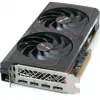Overclocking and undervolting
For the majority of graphics cards, a simple set of methods can be used to slightly increase overall performance. Typically, you can adjust the frequency and voltage of the core GPU clock. By boosting the memory and GPU frequencies on the video card, we may improve the video card's computation clock cycles per second. It may sound complicated, but it can be accomplished in less than a few minutes. I always recommend to novice users and novices not to increase the frequency of the core and memory clocks by more than a few %. Example: If your GPU operates at 1500 MHz, I recommend increasing the frequency in increments of 25 MHz. Advanced users frequently increase the frequency significantly. When your 3D graphics begin to exhibit anomalies such as white spots ("snow"), you should often reduce the clock speed by 25 MHz and leave it at that. Typically, when you overclock your GPU excessively, it begins to exhibit abnormalities, empty polygons, or even freezes. Locate that limit with care and then reduce it by at least 25 MHz from the time you observe an artifact. Take a close look and make detailed observations. I'm not sure why you'd need to overclock today's tested card in the first place, but we'll demonstrate it nonetheless. In conclusion, you always overclock at your own risk.
Overclocking
| |
||
| Reference frequency | This sample | Overclocked |
| Boost Clock: 2560 MHz | Boost Clock: 2810 MHz | Boost Clock: ~2850 |
| Memory Clock: 18000 MHz | Memory Clock: 18000 MHz | Memory Clock: 19400 MHz |
|
||
Undervolting
With traditional overclocking out of the way, we'll now have a go at the card with undervolting. Basically, we apply a tweak based on the AMD Radeon Control panel and apply roughly the same settings as we did without regular tweaks. This round however we'll lower the voltage curve, as for whatever reason AMD Radeon cards really like that.
Above: example of the AMD control panel that you can best use
To optimize your settings, follow these steps:
- Normally begin by increasing the power limit to its uppermost value, for this card which is it was not allowed 0%. This ensures any power restrictions are eradicated.
- Configure the maximum clock range to a limit you are comfortable with, this can even be 4000 MHz. This prevents any clock limitations. We feel ~3400 Mhz is enough. The card will dynamically downclock anyway.
- Adjust the minimum clock to 2850. Refrain from setting it exceedingly high. If, during testing, the clocks appear to hover around this figure, you can incrementally increase it to 3000 or even 3250. This setting doesn't truly define the real minimum clock but serves as a reference for AMD's clocking algorithm in the frequency curve.
- Gradually decrease the maximum voltage. Monitor the card's stability while running benchmarks or games. With RDNA3, undervolting is essential as it provides additional power leeway for the clock algorithm, promoting higher frequencies. Typically, these cards become unstable around 975~1000 mV. Again, the voltage table is based on offsets and curves, so setting at 927 mV can result 1050mV when the GPU is under load. It's about getting that overall voltage down.
- After determining your optimal voltage, optionally increase it by 25 mV to safeguard against GPU clock instability. Next, set the memory to 2225 MHz. Progressively increase this in increments of 25 MHz. While running stability tests, take note that the memory might crash abruptly without displaying any artefacts or slowdowns.
- Once the maximum memory setting is identified, revert to your undervolt configuration and frag away.
- Should you encounter any instability during gameplay, either increase the voltage by 10 mV increments or slightly reduce the memory overclock.
The end result of this tweak brings us roughly 6% more performance:






